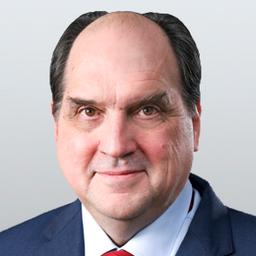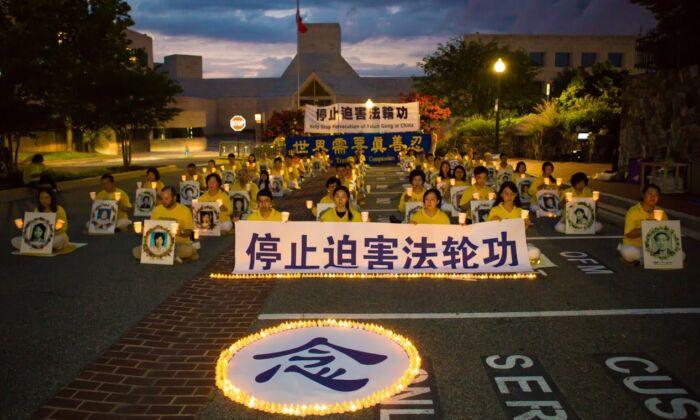President Donald Trump recently tweeted that evaluating a president after the first 100 days in office was a “ridiculous standard.” In fact, there is widespread agreement that looking back at the accomplishments of a president from the vantage point of the first 100 days is arbitrary.
But there are reasons for the nation to want to take stock of this new administration early and often.
Trump’s election was a response to a silent crisis in our country—silent because our political and media establishments failed to address it.

He was elected as the tribune for those he called in his inaugural address “the forgotten men and women of our country.”
These include a middle class whose income has declined for more than a decade and whose wealth took a hard hit during the Great Recession; a working class that has faced chronic unemployment; and a white working class that, bucking longstanding national trends, has seen its mortality rates rise, an increase experts attribute to despair.
Trump’s partisans feel keenly that the media and political establishments have overlooked their suffering. On Trump’s success or failure ride their hopes that the nation’s institutions can work for them.
Trump won the White House with a combination of populism and nationalism that upsets the globalist consensus that has dominated both the Republican and Democratic parties. If he succeeds, Trump will reshuffle our national politics.
His dictum of “America First” directly affects how Trump approaches foreign policy and trade and breathes a spirit of urgency into addressing unemployment, crime, failing schools, and other issues on the domestic agenda.
What the Polls Say
News media are widely reporting that Trump is the least popular president ever at the end of the first 100 days in office, with the Real Clear Politics average of polls showing Trump underwater by 9.5 percent, with a 42.3 percent approval rating.The stats website FiveThirtyEight breaks down polls of Trump into two groups: those surveying all adults and those surveying voters. Trump does significantly better among voters, garnering a 47 percent approval rating and 49 percent disapproval rating among voters, versus 43 percent approval and 51 percent disapproval among adults.
Of course, Trump has never polled well; throughout most of the presidential campaign, his numbers were in the low 40s.

A Washington Post poll released on April 23 shows that Trump is holding tightly to his base: 96 percent say supporting him is the right thing to do and only 2 percent regret voting for him.
Since the modern era of polling began in 1936, the United States has never had such stark partisan divisions as it does today, with the country split into two more or less equal blocks of voters each tightly bound to its side.
The performance of the media makes it difficult for Trump to break off new supporters. On April 19, the conservative Media Research Center (MRC) reported that since Trump became president, the broadcast networks “largely ignored important national priorities such as jobs and the fight against ISIS, in favor of a news agenda that has been dominated by anti-Trump controversies.” The networks’ coverage of Trump was 89 percent negative, according to the MRC.
Given the strength of feeling opposing not just Trump but the Republicans in general, Trump’s popularity may remain stuck in the 40s.
New Confidence in the Economy

- In March, the National Association of Manufacturers found that 93 percent of manufacturers felt positive about their economic outlook, compared to 56.6 percent the previous year.
- On Oct. 23, 2016, the Weekly Gallup Economic Confidence Index was at negative 12. Shortly after Trump’s election, it turned and has remained positive.
- The Business Roundtable’s Economic Outlook Index jumped 19.1 points, from 74.2 in the fourth quarter of 2016 to 93.3 in the first quarter of 2017. The organization says the index is based “on CEOs’ plans for hiring and investment, and expectations for sales over the next six months.”
- In March, the National Association of Home Builders/Wells Fargo Housing Market Index hit its highest reading since June 2005. The index “gauges builder perceptions of current single-family home sales and sales expectations for the next six months.”
- The Wells Fargo/Gallup Small Business Index hit 100 in March, reaching its highest point since July 2007. The index is up 20 points since November 2016 and 33 points since the previous year.
- In March, the Conference Board Consumer Confidence Index reached its highest level since December 2000.
- Forbes’ American Dream Index, which Forbes says “strives to capture whether the economy is strong enough to deliver middle-class prosperity,” climbed sharply from a low point of 99 in December 2016, Obama’s last month in office, to 100.5 at the end of February 2017.
A Bold Foreign Policy

When U.S. destroyers launched 59 Tomahawk cruise missiles at a Syrian air base on April 6, in reprisal for a chemical weapons attack on civilians, U.S. foreign policy took a dramatically different course.

Former U.S. Ambassador to the United Nations John Bolton told Fox News, “The Obama era for American foreign policy is clearly over.”
In a rare show of bipartisan unity, Senate Minority Leader Chuck Schumer (D-N.Y.) and House Minority Leader Nancy Pelosi (D-Calif.) both supported the strike.
Anne-Marie Slaughter, a former policy planner for the State Department under Obama, spoke for many when she tweeted, “Donald Trump has done the right thing on Syria. Finally!! After years of useless handwringing in the face of hideous atrocities.”
While the strike had broad-based support, what exactly it portends for American foreign policy going forward is not clear.
Trump has professed admiration for Ronald Reagan’s policy of “peace through strength” and Teddy Roosevelt’s “speak softly and carry a big stick.” Trump has said several times that he wants a military so strong that America never has to use it.
In the case of Syria, the airstrike was meant to send a message about chemical weapons. Trump has said no further intervention is intended.
Nonetheless, the airstrike has been taken as a sign that the United States will play a more assertive role on the world stage and has helped give credibility to U.S. threats of force.
Such threats have been made by the United States in response to North Korea’s plans to conduct a nuclear test and have been reinforced by the region’s powers working with the United States. While visiting South Korea on a recent tour of Asia, Vice President Mike Pence said the “era of strategic patience is over” and “all options are on the table.”
When the Syrian airstrike took place, Trump was meeting Chinese leader Xi Jinping, whom he informed of the strike over the chocolate cake they had for dessert.
Something in the Trump–Xi meeting clicked, because China, which has been North Korea’s main patron, has since supported the United States in taking a tough stance against North Korea’s nuclear program. China refused coal shipments from North Korea—a major source of foreign exchange for the isolated country—and threatened to limit Chinese shipments of oil to North Korea. China also warned North Korea to take the United States’ threats seriously and refrained from criticizing the United States for moving warships toward North Korea.
North Korea did not conduct the planned test and now faces uncertainty introduced by the new American resolve to deny it nuclear weapons.
Trump said the top U.S. priority is defeating the ISIS terrorist group. The detonation of the “mother of all bombs” (officially named the Massive Ordnance Air Blast) over an ISIS headquarters in Afghanistan reinforced the idea that the United States will use force to pursue its ends.
Trump has been meeting with Middle Eastern heads of state, including a warm visit with Israel’s Benjamin Netanyahu that reset what had become a troubled alliance.
A Supreme Court Justice Appointed

A key factor in Trump’s gaining the support of conservative Republicans after he won the nomination was how he handled picking a justice to replace the deceased Antonin Scalia, who was a hero to conservatives.
Given the outsized role the Supreme Court plays in deciding how the United States is governed, appointments to the court are often considered the most important domestic policy issue.
Trump solicited a list of 20 possible Supreme Court nominees from the conservative Federalist Society. The list was received with general acclaim by conservatives, and Trump promised to nominate someone from that list who was in the mold of Scalia.
While conservatives often disagreed with Trump on several issues, Trump’s list and promise helped bring them to his side after a bruising primary campaign.
On Jan. 31, less than two weeks into the presidency, Trump chose Neil Gorsuch, a judge on the U.S. Court of Appeals for the 10th Circuit in Colorado.
In confirmation hearings, Democratic senators subjected Gorsuch to tough and hostile questioning, but he won wide applause for his temperament and legal knowledge.
Some liberals made the case for Gorsuch. For instance, Democrat Neal K. Katyal, a law professor at Georgetown University and an acting solicitor general in the Obama administration, wrote in The New York Times that liberals should back Gorsuch, arguing that his independence and integrity will help restore confidence in the rule of law.
Nonetheless, the Democratic leadership decided to filibuster Gorsuch’s nomination, prompting Senate Majority Leader Mitch McConnell (R-Ky.) to use the “nuclear option,” changing the Senate rules so that only a majority vote was needed for confirmation. Gorsuch was confirmed by a vote of 54-45, with three Democrats joining a unified Republican majority.
Gorsuch, 49 at the time of his appointment, could serve for several decades on the court. His appointment returns the court to the status quo ante, with four liberals, four conservatives, and a right-leaning swing vote in Justice Anthony Kennedy.

Getty Images)
The Temporary Travel Ban
Trump issued an executive order on Jan. 27 issuing a temporary moratorium on travel from seven Muslim-majority countries, for the purpose of establishing procedures for preventing terrorists from those countries from entering the United States. The rollout of the ban was handled poorly, with green card holders, for instance, being prevented from returning to the United States.A federal court blocked the further implementation of the order. On March 6, Trump issued a new executive order meant to take into account the court’s objections, and that order has also been blocked. The administration is appealing.
Curbing Illegal Immigration

Immigration is, perhaps, Trump’s signature issue. He has made a priority of deporting illegal immigrants guilty of crimes and has ordered that immigration laws be enforced.
Attorney General Jeff Sessions, in remarks made at the Mexican border on April 11, reflects the administration’s tone: “This is a new era. This is the Trump era. The lawlessness, the abdication of the duty to enforce our immigration laws, and the catch-and-release practices of old are over.”
Sessions reported that the administration’s tougher policies are already producing results: “From January to February of this year, illegal crossings dropped by 40 percent, which was unprecedented. Then, last month, we saw a 72 percent drop compared to the month before the president was inaugurated. That’s the lowest monthly figure for at least 17 years.”
In order to carry out the administration’s increased prosecutions, Sessions announced a new, streamlined hiring plan that will add 50 new immigration judges this year and 75 next year.
Sessions also announced that a top priority for law enforcement would be the “dismantlement and destruction” of the drug cartels that operate across the border.
On April 21, Sessions, enforcing an executive order issued by Trump in January, wrote to New York, Chicago, and seven other sanctuary cities demanding that they prove they are communicating with federal officials about illegal immigrants, or else risk losing grants they receive from the Justice Department.
Trump’s most famous promise involving immigration is that he will build a “big, beautiful wall” on the Mexican border. The administration initially requested $1.4 billion for this year’s budget to get this started, but, facing resistance from House leadership, has agreed to postpone the request until September.
Trump is also getting pushback from conservatives over his recent comments that the “Dreamers” should rest easy. These are individuals brought illegally to the United States as children who are protected from deportation by Obama’s Deferred Action for Childhood Arrivals program.
Promoting Energy Independence

- Approving the Keystone XL pipeline that will bring Canadian oil to Illinois and then connect to refineries on the Gulf Coast. Environmentalists have vowed to stop it, and the Nebraska Public Service Commission needs to approve it.
- Approving the Dakota Access pipeline, which is now bringing oil from the Bakken oil fields in North Dakota to the existing pipeline system in Illinois. A decision in the court challenge to the pipeline is expected in several weeks.
- Issuing an executive order that directs the Environmental Protection Agency to rescind and rewrite the Clean Power Plan, a regulation drafted by the Obama administration that was aimed at putting the coal industry out of business through limits on carbon dioxide emissions.
- Issuing an executive order on “promoting energy independence and economic growth” that rolls back a raft of Obama administration environmental policies. At the signing ceremony, Trump said: “My administration is putting an end to the war on coal. ... We will put our miners back to work.”
- Passing a bill under the Congressional Review Act that rescinds the Obama administration’s Stream Protection Rule, which was meant to protect waterways from coal waste.
- Passing a bill under the Congressional Review Act that rescinds an Obama administration rule requiring special financial disclosure requirements for energy companies.
- Adding 35,000 coal mining jobs since October 2016.

Regulatory Reform
Trump campaigned on reducing the burden of regulations on American business. On Jan. 30, 10 days into his administration, he issued an executive order that requires agencies to rescind two regulations for each new regulation they issue. The order is similar to policies adopted by Australia, Canada, and the United Kingdom.Trump and the Press

Trump and the press have been locked in an antagonistic, mutually dependent relationship since the campaign. At Trump’s rallies, his fans would turn to the press and chant “tell the truth.”
Trump regularly uses the epithet “fake news” when he mentions CNN and “failing” when referring to The New York Times.

While relations seem to have become less hostile, Trump is not attending the White House Correspondent’s dinner on April 29 as is customary for presidents, and is instead upstaging the dinner by holding a big rally in Pennsylvania, forcing reporters to choose between covering the rally and attending the dinner.
Perhaps the nadir of Trump’s relations with the press occurred on Feb. 24 when several outlets were barred from attending a press gaggle at the White House. Speaking that day at the Conservative Political Action Conference, Trump complained about news outlets using anonymous sources to report on his administration.
Since Trump won the presidency, the press has used anonymous sources in covering allegations that Trump colluded with Russia to win the election. The press has pursued these allegations tirelessly, despite much of the information having been discredited. “On the question of the Trump campaign conspiring with the Russians here, there is smoke but there is no fire, at all,” said Obama’s acting CIA chief Michael Morell at a March 16 event, according to NBC News.
On March 15, Obama’s one-time acting CIA Director Michael Morell said, “On the question of the Trump campaign conspiring with the Russians here, there is smoke, but there is no fire at all,” he said. “There’s no little campfire, there’s no little candle, there’s no spark. And there’s a lot of people looking for it.”
Meanwhile, the press, primarily conservative news outlets, began reporting allegations that the Obama administration had surveilled members of Trump’s campaign and transition staffs and arranged for the results of the surveillance to be spread throughout the bureaucracy, in effect ensuring the subsequent leaks would begin.
According to the conservative Media Research Council, during Trump’s first 100 days, he has received an unprecedented amount of negative coverage by the broadcast networks, with 89 percent of the coverage being negative. On ABC, CBS, and NBC, the council documented 1,501 negative comments (excluding comments by partisans) and 186 positive statements (excluding comments by partisans).
The negative coverage has not won over the audience. According to an Emerson College poll, 39 percent feel the media are truthful and 53 percent believe the media are untruthful, versus 49 percent who feel Trump is truthful and 48 percent who believe he is not.
Obamacare and Tax Reform

Trump’s plan for the first 100 days included two audacious items: repealing and replacing Obamacare and passing tax reform. Right now, both measures are stalled, although negotiations between the White House and members of Congress are ongoing.
Both measures are fundamental to Trump’s presidency. He campaigned on repealing Obamacare, and the Republican Party has campaigned on repealing the bill since it was passed in 2010.
The new business and consumer confidence, and the dramatic rally enjoyed by the stock market, are based in large part on benefits expected to come from replacing Obamacare and lowering tax rates.
Trade Deals

Trump says he believes in free and fair trade. On Jan. 23, just a few days after taking office, Trump signed his first executive order, which withdrew the United States from the Trans-Pacific Partnership, a giant trade deal that had been negotiated by the Obama administration. The treaty had not been ratified by Congress and so withdrawal did not involve any change in U.S. trade practices.
Trump prefers bilateral trade deals to multilateral trade deals. He has said he wants to renegotiate the NAFTA deal with Mexico and Canada, which he believes has had a disastrous effect on the U.S. economy.
On March 31, he signed an executive order that directs the Commerce Department to review the reasons for trade deficits and to assess the relations with every trading partner to determine any violations of trade rules that harm U.S. workers. On the same day, he signed an order establishing a system for collecting all import taxes levied on foreign firms that violate global trade rules.





